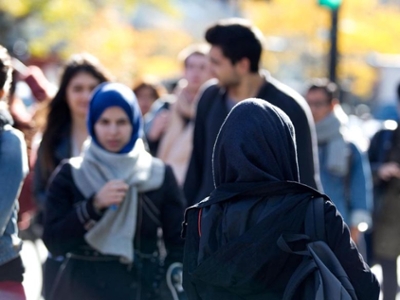Cities key to Canada's success
Posted by Daniel Hoornweg on November 29, 2019

As the dust from the federal election settles, a familiar picture emerges. Canada’s cities have again chosen a different path from the rest of the country. Almost all of the Liberal seats are in Canada’s top 10 cities. Calgary and Edmonton bucked the trend, providing the only urban seats for the Conservatives.
Why do our cities often seem so different from the rest of the country?
Canada is the only country that gives sovereignty over resources to provincial governments, e.g., oil and gas in Alberta, hydropower in Quebec and BC, seafood in the Maritimes. Electricity, health, education, and most transportation and housing issues are provincial mandates. This drives much of our national politics, in addition to the regional differences and diversity that any large country would have.
Canada was one of the earliest countries to surpass the half-urban mark (in 1921), and is now more than 80 percent urban. Half our national wealth is generated by six cities (urban regions). That’s a share that is on track to increase to more than 60 percent by 2067, Canada’s bicentennial. For comparison, Canada’s total oil and gas sector is less than 10 percent, and declining. However, with a Constitutional focus on provincial territories and rights, Canada’s cities are still largely peripheral in national politics.
The angst of ‘western alienation’ and the rise of the Bloc Quebecois reflects our arrival at a fork in the road. In one direction, recognition of the inevitability of globalization, urbanization, and inter-connected economies that present the need for nuanced approaches to complex problems like immigration, climate change, and economic renewal. In the other, we entrench in the comfort of familiarity, independence, and short-term certainty leaving future generations to manage what comes from inexorable global shifts.
This urban-rural divergence is not unique to Canada. The same forces underpin the rise of Donald Trump and Brexit. Canada may have arrived at this point sooner than most countries. How we continue will determine much of the country’s future.
The politics of a robust democracy are rule-based, yes-or-no, with clear borders, and likely the farthest approach you could devise to oversee something as complex and dynamic as a big city. Politics reinforces the rigidity of artificial barriers – whether it be selling beer or labour across borders, politics can frustrate the spread of ideas and actions. Canadians have clearly expressed frustration with the divisive nature of politics, while often continuing to be divided themselves.
Local governments (municipalities) are no better at this ‘border problem’ than other levels of government. Travel and mobility, waste management, energy supply – these are services that should naturally cross political borders, yet governments typically erect barriers. The Toronto region’s 20-plus transit authorities and numerous government agencies (at four different levels), across 57 municipalities provide a powerful example of how good intentions have a hard-time crossing borders. This infighting and lack of cooperation is the biggest barrier to better mobility in large Canadian cities.
Whether it be travel on streets and subways, reducing carbon emissions, waste collection, or water and energy use, cities will be at the forefront of pricing for services. They have no choice – cities are the most fiscally constrained level of government and are desperate for tools that enhance efficiencies and innovation. Nothing improves the use of a service or commodity better than a price tag.
Canada’s governance was designed at a time when the economy’s ‘golden geese’ were forests, farmer’s fields, beaver pelts, oil and gas, and rivers. Today, Canada’s golden geese dwell in cities. Both the care of the geese and equitable distribution of their benefits needs to improve. Housing, inclusion, equity, mobility, clean air, climate change, data management protocols, need to become everyone’s priorities. With their growing ability to generate wealth, cities need to support others as they transition to a new economy.
The most powerful counter-force to western alienation will not be the federal government, but rather the mayors of Calgary, Edmonton, and Saskatoon. Similarly the strongest dissent to Quebec’s Bill 21 will be from Montreal. A region cannot succeed without the success of its cities.
Urban regions, those messy, ill-defined agglomerations of communities that stretch across several political borders like 416-905 and Greater Vancouver and Montreal will continue to attract global talent, generate new ideas, and power our economy. One easy way to help Canada’s largest urban centres is to establish service advisory boards that report to all levels of government, and the public. Every year the health and well-being of our key assets – the broader regions of Toronto, Montreal, Vancouver; Edmonton-Calgary, and Ottawa-Gatineau – should be assessed and shared.
Canada is incredibly fortunate to have thriving, competitive cities as well as plentiful natural resources. Canadians need to see that we are in this together. This sense of neighbourly support will start locally, as it always does, but it needs to grow nationally, and quickly. Just as the railway linked Canada together in 1885, we need to link our cities with all parts of Canada. Cities and the rest of Canada need to travel together. There is no other route to success.
Filed under: Sustainability 101